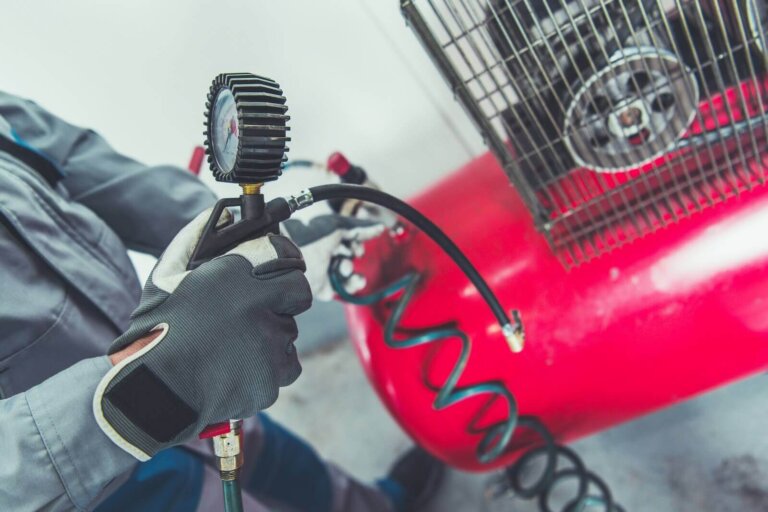For anyone associated with manufacturing, the word “maintenance” is very familiar. The difference between preventive maintenance and predictive maintenance lies in the methods used, the amount of lead-time you have for a task, and the precision of scheduling. Predictive maintenance (PdM) is in the same family as preventive maintenance. They are both proactive types of maintenance which means that work is done on an asset before something bad happens to it
What is predictive maintenance?
Predictive maintenance is a maintenance strategy that that uses condition-monitoring tools and techniques to track the performance of equipment during normal operation in order to detect possible defects and fix them before they result in failure.
Predictive maintenance aims to:
- Reduce the number of unexpected breakdowns and maximize asset uptime.
- Cut down operational costs by optimizing the time you spend on maintenance work.
Predictions are based on the condition of the equipment, which is constantly evaluated based on the data gathered through diverse inspections. Using preventive maintenance, you can improve your bottom line by reducing long-term maintenance costs.
Predictive maintenance is based on the exchange of information, which allow maintenance techs to make sense of what is happening in the machines and identify any assets that might need attention.
How does predictive maintenance work?
Predictive maintenance uses condition-monitoring equipment to evaluate an asset’s performance in real-time. It relies on condition-monitoring equipment to assess the performance of assets in real-time. By combining condition-based diagnostics with predictive formulas and with a little help from the Internet of Things (IoT), PdM creates an accurate tool for collecting and analyzing asset data. This data allows for the identification of any areas that need or will need attention.
Implementing predictive maintenance is easy. These are the steps:
- Identify critical assets
- Establish a database
- Analyze failures modes
- Analyze and establish failures modes
- Install Internet of Things (IoT) devices
- Connect devices to software
- Schedule maintenance
Predictive maintenance tools
There are three types of predictive maintenance tools, which are sensors, analytics and monitoring tools and scheduling tool. These tools can be employed either by your own maintenance technicians or through the employment of a specialized third party who can come in on a regular basis to do monitoring.
IoT sensors
Sensors have always been an important part of any maintenance plan because they allow us to monitor changes and make adjustments to prevent small issues from evolving into major problems.
Having different sensors to monitor diverse types of metrics can be essential to get a better understanding of the processes and can help you to prevent early failures.
One important part of this field includes IoT sensors to monitor key changes in components. By using IoT technology, the different sensors can collect and share data. PdM relies heavily on these sensors to connect the assets to a central system that stores the information collected.
Sensors enabling vibration, sonic, and ultrasonic analysis
Sensors provides information to the systems connected to them. Once calibrated, a system can detect and record any unusual vibrations that can occur due to a number of factors.
Alongside the sensors, PdM software can access a number of different data sources in real time, which can then predict asset failure or quality issues. These solutions use predictive analytics to detect any anomalies and failure patterns, determining where any problems or failures are likely to occur.
Thermal imaging sensors
Excessive heat is a death sentence for many machines and it is a primary maintenance concern for telecom companies. Thermal imagery uses infrared images to monitor temperatures in a way that any abnormalities become apparent quickly. As with other change-sensitive monitors, they trigger scheduling systems, which would then lead to the appropriate action being taken automatically in order to prevent component failure.
Oil and lubricant sensors
This sensor effectively measures components of the specific complex impedance of oils.. The measuring signals can be transmitted online to a web-based monitoring system via LAN, WLAN or serial interfaces of the sensor. The main advantages of using this kind of sensors are the access to lubrication conditions in extreme circumstances and not accessible machinery to establish a good predictive and proactive maintenance to detect early stages of degradation of lubricating oil. All these benefits will lead to significant savings in maintenance and operational costs.
Monitoring and industrial analytics tools
Industrial analytics are an integral part of the ‘fourth industrial revolution’, which is the fusion between traditional industrial practices, digital technology and IT improvements. These advances include data analytics, machine learning, and advances in connectivity through Internet of Things. This means that a greater number of decisions and actions are starting to become based on measurable data. The data collected previously is analyzed using predictive algorithms, which identify trends with the aim of detecting when an asset will require repair, servicing, or replacement.
Maintenance scheduling and planning tools
These tools enable us to assign work with the click of a button. Thanks to scheduling solutions, your company’s time and resources could be used in a more efficient way.
The scheduling tools will help you with the following tasks:
-Assigning resources and scheduling activities and tasks.
-Optimization of production schedules proactively.
-Apply countermeasures much sooner when is necessary, increasing the changes to balance any issues that may arise
-Detection of bottlenecks in diverse departments and the implementation of practices that can solve the issues.
How to implement predictive maintenance?
Predictive maintenance strategy uses data from predictive maintenance tools to drive asset management decisions. Knowing the condition of complex machinery lets managers make better decisions.
The question you might have is how do you implement a predictive maintenance plan? Firstly, you need to know which problem (s) you are trying to fix. Then you need to assess your current status, or create a baseline of data on machine performance. For this, you can use your own standards, OEE standards or other industry standards.
Secondly, you need to examine the historical data for patterns and see which metrics indicate that there is a problem. Finally, once you are using these patterns and the data, you need to implement a process for continually updating and reviewing the data to ensure that it reflects the current status of your equipment. The keystone to implement an effective predictive maintenance strategy is to get accurate data. Selecting the right platform to analyze the data is another relevant step. With such a platform in place, the image of the mechanic shuffling his toolbox toward a breakdown with little or no knowledge of what they will find can be replaced by the image of a focused team that have workflow guidelines based on real-time information. Predictive maintenance eliminates unnecessary time spent on looking for the cause of the problem, making this process much more efficient.
Benefits of predictive maintenance
Investing in predictive maintenance tools will result in tangible benefits for your company like the ones listed below.
Reduce maintenance costs
By being able to predict and avoid equipment failure, companies can save money. In asset-intensive industries, improving maintenance planning can result in huge savings. IoT-based predictive maintenance allows you to systematically schedule the optimal maintenance and inspection routine to avoid unplanned downtime and unnecessary effort
Reduce breakdown time
Every industry has an average machine breakdown rate usually expressed in terms of percentage. By introducing a more focused response to equipment failure, those breakdown numbers can be reduced, saving money for the entire operation through increased efficiency and maintaining high-quality production output.
Optimize productivity
Predictive maintenance reduce the amount of time needed for repair and the frequency of repair for critical failure of equipment. The number of breakdowns decrease, factory conditions improve dramatically leading to a reduction of worker injuries. All these factors help to increase productivity.
Increase revenue
Successful preventive maintenance will have a positive impact on your revenue. Not only does it have a positive effect on your eventual net profit, but also on return-on-investment (ROI).
In a comprehensive study conducted by McKinsey in 2015, they uncovered the following improvements due to preventive maintenance.
- 10-40% reduction in maintenance costs.
- 10-20% reduced waste.
- 10-50% new improvement opportunities uncovered.
Protect assets
Predictive maintenance (PdM) is aimed at reducing the likelihood of failures and, as a result, avoid costly downtime and lower maintenance costs. It enables you to monitor, maintain and optimize assets for better availability, utilization and performance. It can be implemented by monitoring the condition and performance of equipment during its normal operation, and using sensor technology and computerized maintenance management system (CMMS) software.
Improve safety and compliance
Predictive asset maintenance enables companies to anticipate and address possible safety risks and predict potential issues before they impact workers. They can take appropriate action to diminish safety risks by analyzing data from multiple sources, along with the data generated from IoT devices and sensors. By analyzing data over long periods of time, you can identify potentially hazardous conditions and estimate its impact on working conditions.







